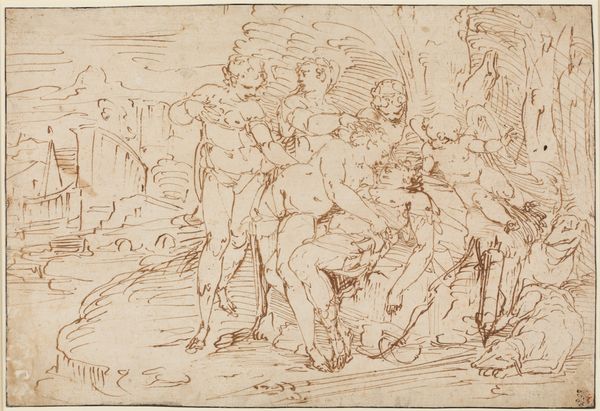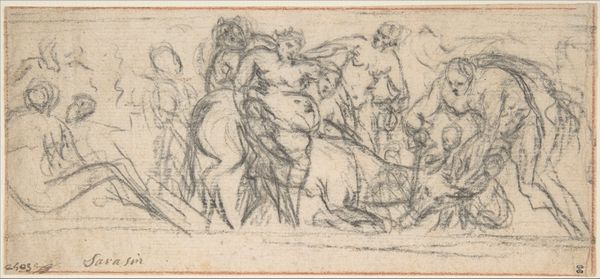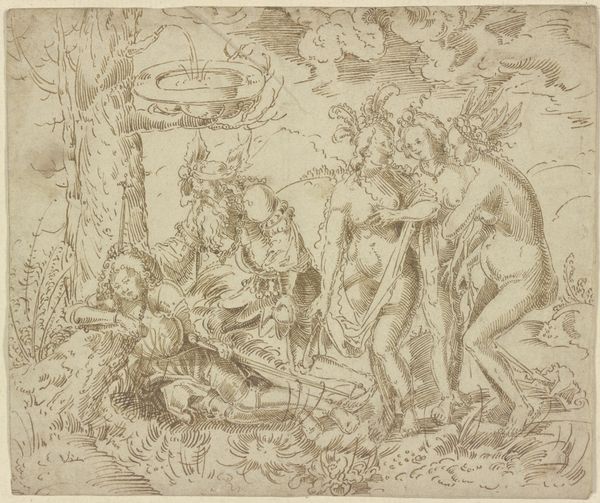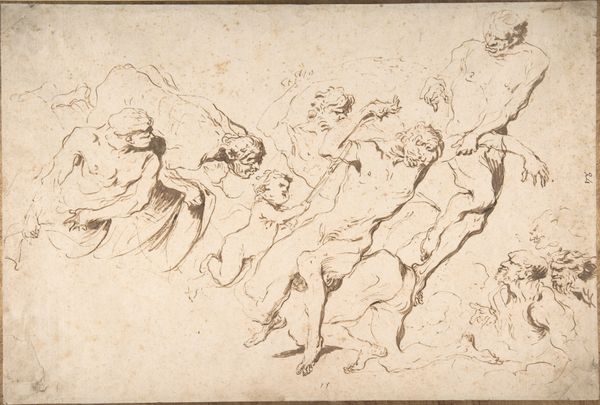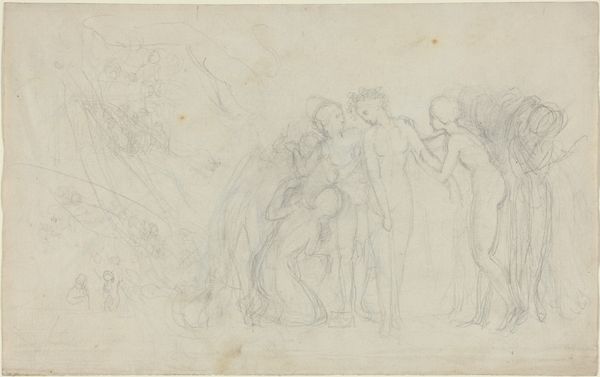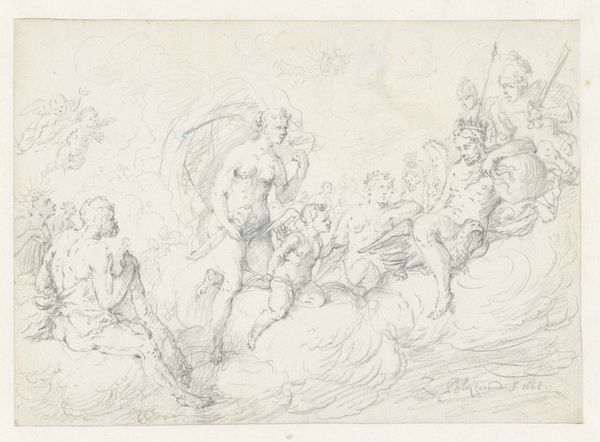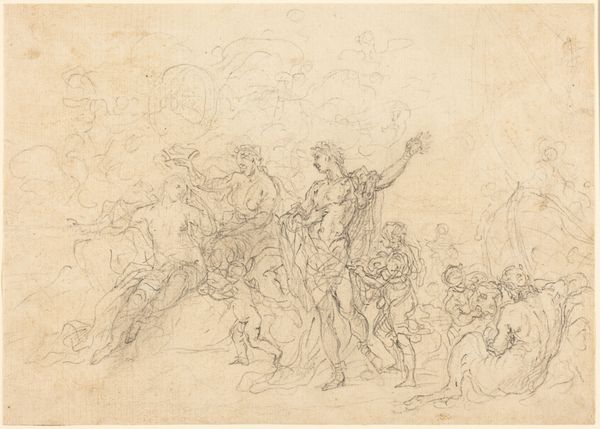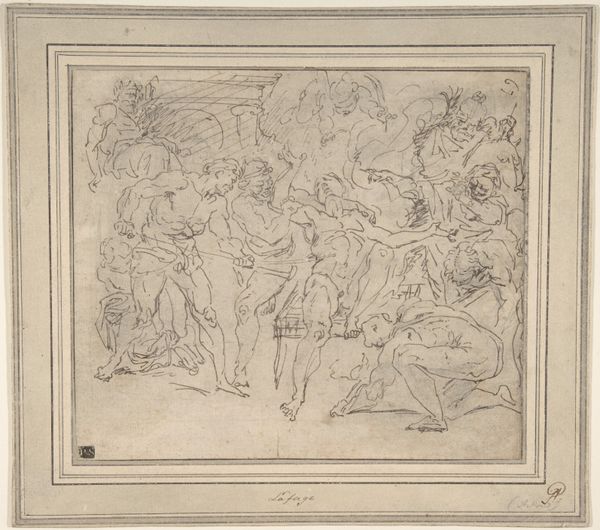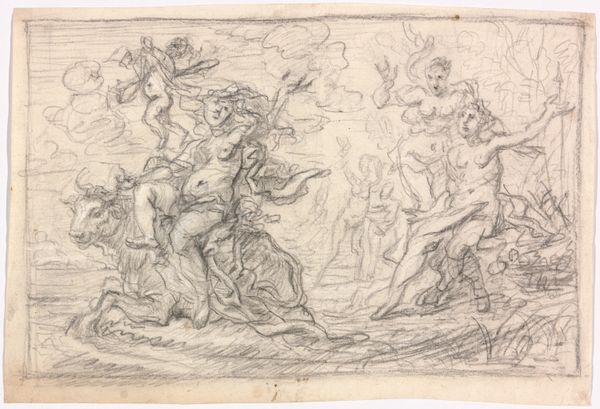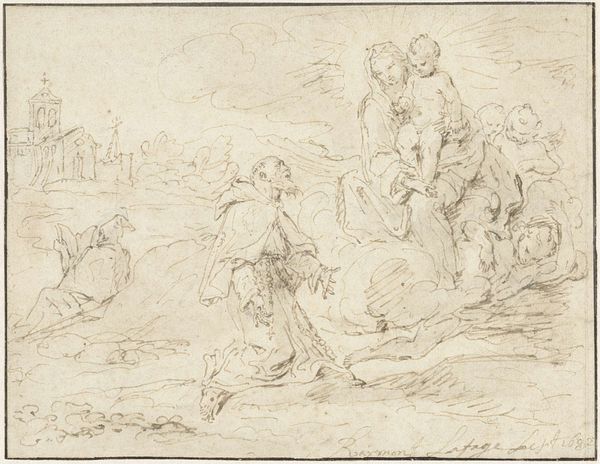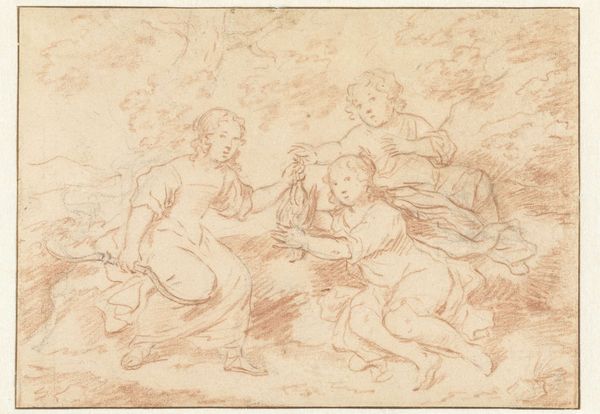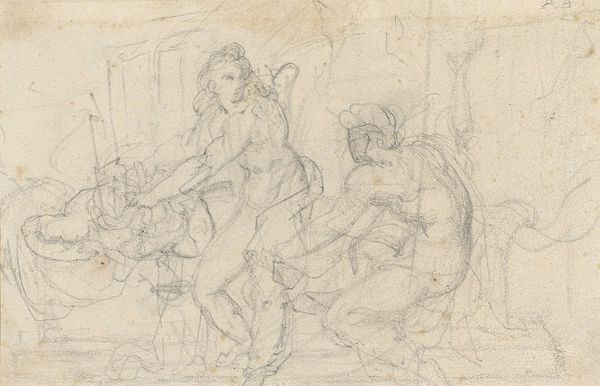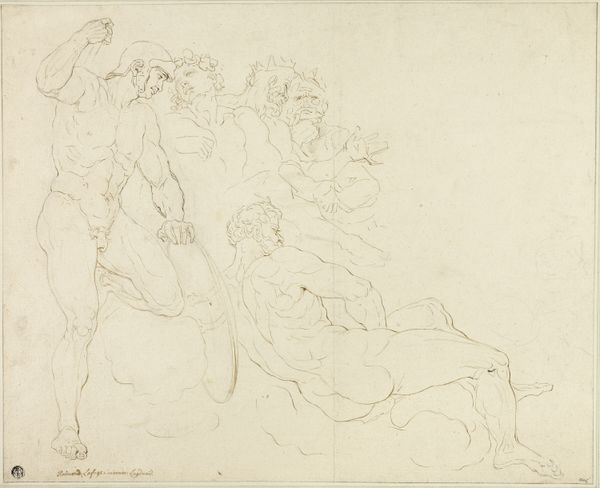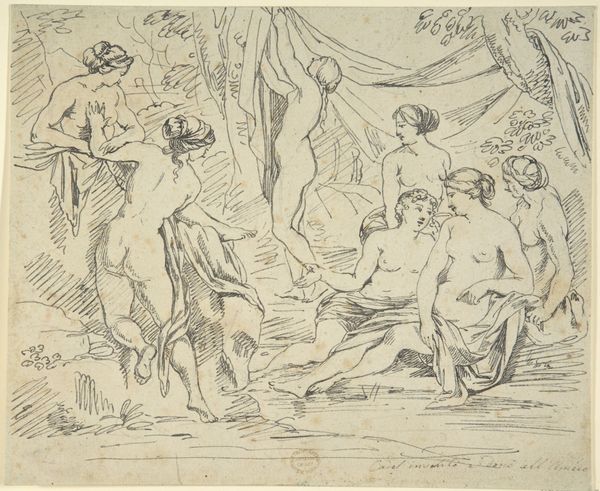
drawing, paper, ink
#
drawing
#
baroque
#
pen sketch
#
pencil sketch
#
landscape
#
figuration
#
paper
#
11_renaissance
#
ink
#
history-painting
Dimensions: height 177 mm, width 271 mm
Copyright: Rijks Museum: Open Domain
Editor: Here we have Peter Paul Rubens's "The Nymphs of Diana Loading their Hunt," created between 1611 and 1616. It's an ink drawing on paper, currently held at the Rijksmuseum. It feels quite dynamic, even unfinished, with the flurry of lines giving the impression of movement. What catches your eye? Curator: What strikes me is how Rubens uses this classical subject – Diana and her nymphs – to subtly explore the construction of gender roles within the elite social structures of his time. The nymphs, active and powerful in the hunt, are also presented as objects of beauty, destined, according to the mythological narrative, to serve men. It's a visual representation of the inherent tensions between female agency and patriarchal expectations. Do you see any indications of social hierarchy within the composition? Editor: Well, the central figure seems more assertive, and is physically larger, than some of the other nymphs. And one nymph looks to be supporting most of the weight of the hunted animal; is she lower in status? Curator: Precisely. Consider the male gaze embedded within this portrayal. The idealized, almost sensual rendering of the female form, even in the context of a hunting scene, reinforces the objectification of women, transforming them into spectacles for a male audience. Rubens both perpetuates and subtly questions these dynamics. Do you notice how their bodies are composed versus the rendering of the dead game? Editor: That's an interesting distinction; the animal appears flatter and less idealized than the bodies of the nymphs. So is Rubens critiquing the culture that lionizes these classical, male-authored myths, and in doing so allows their embedded ideologies to take hold in social life? Curator: Exactly. Rubens’s work encourages us to question the accepted narratives and to think critically about the power structures that shape our understanding of gender and power. The artwork exists in complex space between the desire to elevate these narratives from antiquity, and simultaneously expose their deep social problems. Editor: I see what you mean. It’s so much more layered than I initially thought; it’s not just a depiction of mythology, it's an active dialogue with it. Curator: Precisely, and hopefully one that encourages new and thoughtful questions about that historical context.
Comments
No comments
Be the first to comment and join the conversation on the ultimate creative platform.
